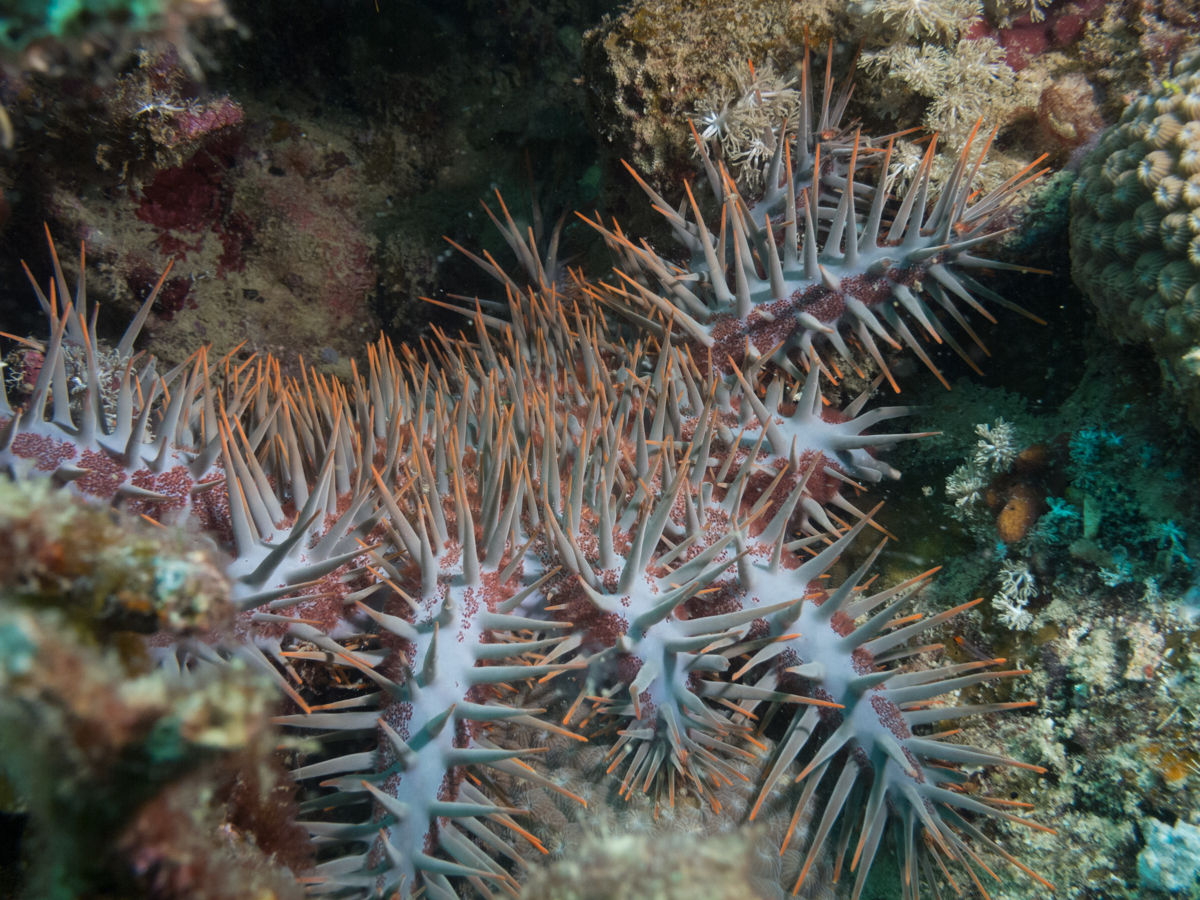The spiny and toxic crown-of-thorns starfish are voracious predators that can wipe out large areas of coral; an individual can consume up to 6 square metres of living reef per year. Outbreaks of the species often occur when ocean temperatures and nutrient levels increase. Crown-of-thorns starfish have long spines and are capable of severe stings. Contact will almost surely inflict severe swelling, pain and nausea that can last for hours or days.
Unfortunately, some of the starfish’s major predators, such as humphead wrasse and giant triton, which usually keep the species in check have declined in recent years as a result of overfishing.

“We are experiencing a return of the starfish in greater numbers,” said WWF-Philippines CEO Lory Tan. The situation facing our reefs is far from normal.”
The Philippines once boasted 25,000km2 of coral reef. However, a recent World Bank study shows that barely 1 per cent of this area remains pristine, and more than 50 per cent are reported to be in decline or unhealthy.
To combat the outbreak, WWF-Philippines is enlisting the help of beachgoers to reduce the number of starfish in an infested area. The most recent action netted hundreds from the world-class diving site of Apo Reef off the west coast of the island of Mindoro, about 100km south of the capital, Manila.
“In the long term, the best response to the situation is by putting a stop to overfishing and agricultural runoff, and to better manage sewage and adds. It’s important to keep our oceans clean and our reefs well balanced.”
According to a WWF survey, outbreaks of crown-of-thorns starfish have been reported at Apo Reef and Puerto Galera in Mindoro, as well as at Mabini in Batangas, Roxas in Palawan, Bolinao in Lingayen Gulf, and Kiamba and Glan in Sarangani Bay. It is possible that many other coastal areas have been affected as well.



